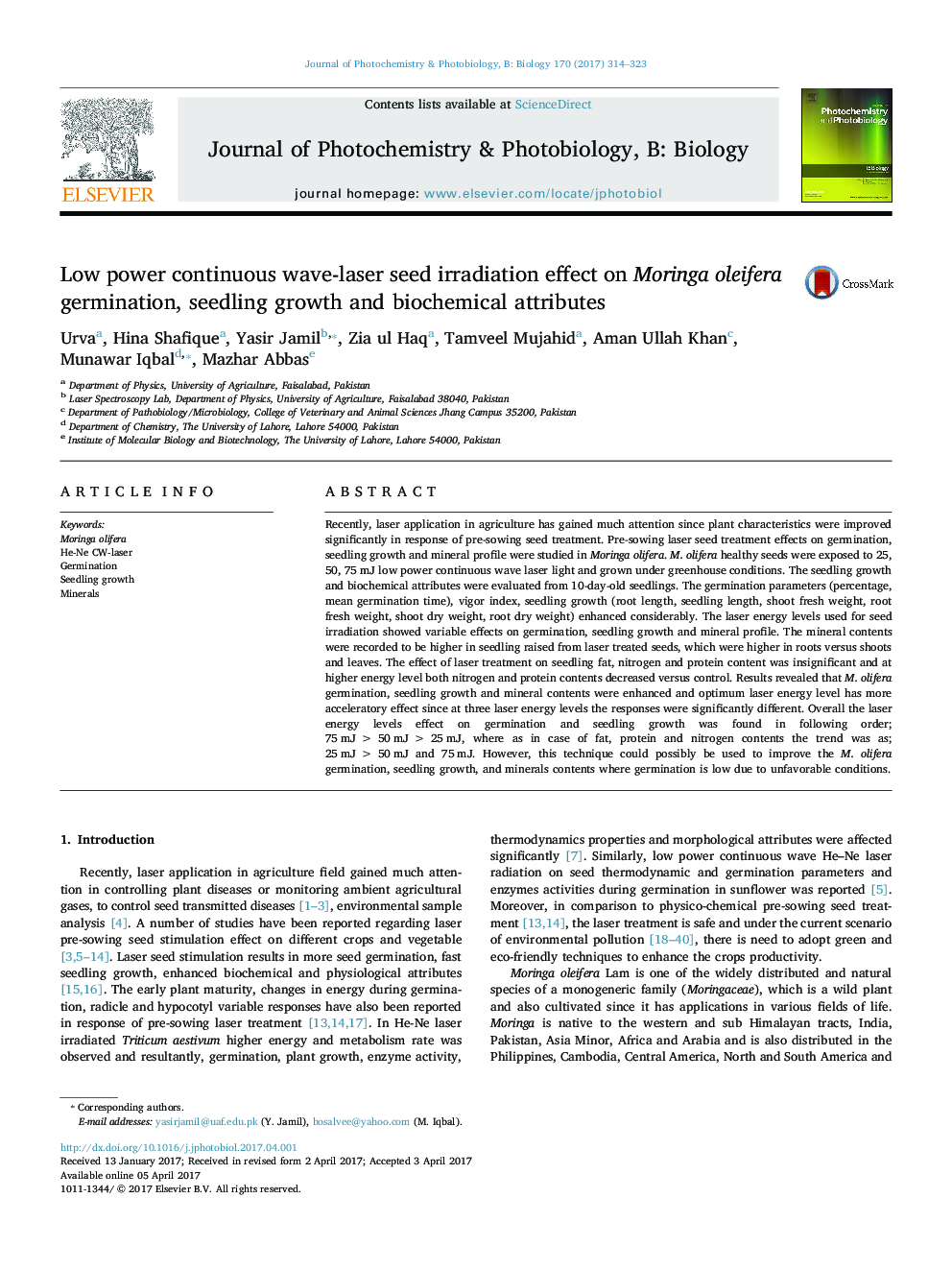| Article ID | Journal | Published Year | Pages | File Type |
|---|---|---|---|---|
| 4754494 | Journal of Photochemistry and Photobiology B: Biology | 2017 | 10 Pages |
â¢Moringa oleifera seeds were undergone to laser treatment at different energy levels.â¢Germination percentage enhanced along with speed of germination.â¢Growth rate was significantly higher in seedlings raised from treated seeds.â¢Laser treatment could possibly be used to enhanced the productivity M. oleifera.
Recently, laser application in agriculture has gained much attention since plant characteristics were improved significantly in response of pre-sowing seed treatment. Pre-sowing laser seed treatment effects on germination, seedling growth and mineral profile were studied in Moringa olifera. M. olifera healthy seeds were exposed to 25, 50, 75Â mJ low power continuous wave laser light and grown under greenhouse conditions. The seedling growth and biochemical attributes were evaluated from 10-day-old seedlings. The germination parameters (percentage, mean germination time), vigor index, seedling growth (root length, seedling length, shoot fresh weight, root fresh weight, shoot dry weight, root dry weight) enhanced considerably. The laser energy levels used for seed irradiation showed variable effects on germination, seedling growth and mineral profile. The mineral contents were recorded to be higher in seedling raised from laser treated seeds, which were higher in roots versus shoots and leaves. The effect of laser treatment on seedling fat, nitrogen and protein content was insignificant and at higher energy level both nitrogen and protein contents decreased versus control. Results revealed that M. olifera germination, seedling growth and mineral contents were enhanced and optimum laser energy level has more acceleratory effect since at three laser energy levels the responses were significantly different. Overall the laser energy levels effect on germination and seedling growth was found in following order; 75Â mJÂ >Â 50Â mJÂ >Â 25Â mJ, where as in case of fat, protein and nitrogen contents the trend was as; 25Â mJÂ >Â 50Â mJ and 75Â mJ. However, this technique could possibly be used to improve the M. olifera germination, seedling growth, and minerals contents where germination is low due to unfavorable conditions.
